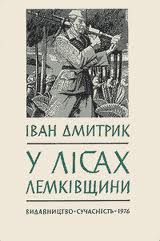Читати книгу - "Genghis Khan and the Making of the Modern World"
Шрифт:
Інтервал:
Додати в закладку:
M
ONGOLS
OF THE THOUSANDS OF cities conquered by the Mongols, history only mentions one that Genghis Khan deigned to enter. Usually, when victory became assured, he withdrew with his court to a distant and more pleasant camp while his warriors completed their tasks. On a March day in 1220, the Year of the Dragon, the Mongol conqueror broke with his peculiar tradition by leading his cavalry into the center of the newly conquered city of Bukhara, one of the most important cities belonging to the sultan of Khwarizm in what is now Uzbekistan. Although neither the capital nor the major commercial city, Bukhara occupied an exalted emotional position throughout the Muslim world as Noble Bukhara, the center of religious piety known by the epithet “the ornament and delight to all Islam.” Knowing fully the propaganda value of his actions by conquering and entering the city, Genghis Khan rode triumphantly through the city gates, past the warren of wooden houses and vendors’ stalls, to the large cluster of stone and brick buildings at the center of the city.
His entry into Bukhara followed the successful conclusion of possibly the most audacious surprise attack in military history. While one part of his army took the direct route from Mongolia to attack the sultan’s border cities head-on, he had secretly pulled and pushed another division of warriors over a distance longer than any other army had ever covered—two thousand miles of desert, mountains, and steppe—to appear deep behind enemy lines, where least expected. Even trade caravans avoided the Kyzyl Kum, the fabled Red Desert, by detouring hundreds of miles to avoid it; and that fact, of course, was precisely why Genghis Khan chose to attack from that direction. By befriending the nomads of the area, he was able to lead his army on a hitherto unknown track through the stone and sand desert.
His targeted city of Bukhara stood at the center of a fertile oasis astride one of the tributaries of the Amu Darya inhabited mostly by Tajik or Persian people, but ruled by Turkic tribesmen in the newly created empire of Khwarizm, one of the many transitory empires of the era. The sultan of Khwarizm had, in a grievously fatal mistake, provoked the enmity of Genghis Khan by looting a Mongol trade caravan and disfiguring the faces of Mongol ambassadors sent to negotiate peaceful commerce. Although nearly sixty years old, when Genghis Khan heard of the attack on his men, he did not hesitate to summon his disciplined and experienced army once again to their mounts and to charge down the road of war.
In contrast to almost every major army in history, the Mongols traveled lightly, without a supply train. By waiting until the coldest months to make the desert crossing, men and horses required less water. Dew also formed during this season, thereby stimulating the growth of some grass that provided grazing for horses and attracted game that the men eagerly hunted for their own sustenance. Instead of transporting slow-moving siege engines and heavy equipment with them, the Mongols carried a faster-moving engineer corps that could build whatever was needed on the spot from available materials. When the Mongols came to the first trees after crossing the vast desert, they cut them down and made them into ladders, siege engines, and other instruments for their attack.
When the advance guard spotted the first small settlement after leaving the desert, the rapidly moving detachment immediately changed pace, moving now in a slow, lumbering procession, as though they were merchants coming to trade, rather than with the speed of warriors on the attack. The hostile force nonchalantly ambled up to the gates of the town before the residents realized who they were and sounded an alarm.
Upon emerging unexpectedly from the desert, Genghis Khan did not race to attack Bukhara immediately. He knew that no reinforcements could leave the border cities under attack by his army, and he therefore had time to play on the surprise in a tortured manipulation of public fear and hope. The objective of such tactics was simple and always the same: to frighten the enemy into surrendering before an actual battle began. By first capturing several small towns in the vicinity, Genghis Khan’s army set many local people to flight toward Bukhara as refugees who not only filled the city but greatly increased the level of terror in it. By striking deeply behind the enemy lines, the Mongols immediately created havoc and panic throughout the kingdom. As the Persian chronicler Ata-Malik Juvaini described his approach, when the people saw the countryside all around them “choked with horsemen and the air black as night with the dust of cavalry, fright and panic overcame them, and fear and dread prevailed.” In preparing the psychological attack on a city, Genghis Khan began with two examples of what awaited the people. He offered generous terms of surrender to the outlying communities, and the ones that accepted the terms and joined the Mongols received great leniency. In the words of the Persian chronicler, “whoever yields and submits to them is safe and free from the terror and disgrace of their severity.” Those that refused received exceptionally harsh treatment, as the Mongols herded the captives before them to be used as cannon fodder in the next attack.
The tactic panicked the Turkic defenders of Bukhara. Leaving only about five hundred soldiers behind to man the citadel of Bukhara, the remaining army of twenty thousand soldiers fled in what they thought was still time before the main Mongol army arrived. By abandoning their fortress and dispersing in flight, they sprung Genghis Khan’s trap, and the Mongol warriors, who were already stationed in wait for the fleeing soldiers, cut them down at a nearly leisurely pace.
The civilian population of Bukhara surrendered and opened the city gates, but the small contingent of defiant soldiers remained in their citadel, where they hoped that the massive walls would allow
Увага!
Сайт зберігає кукі вашого браузера. Ви зможете в будь-який момент зробити закладку та продовжити читання книги «Genghis Khan and the Making of the Modern World», після закриття браузера.
























